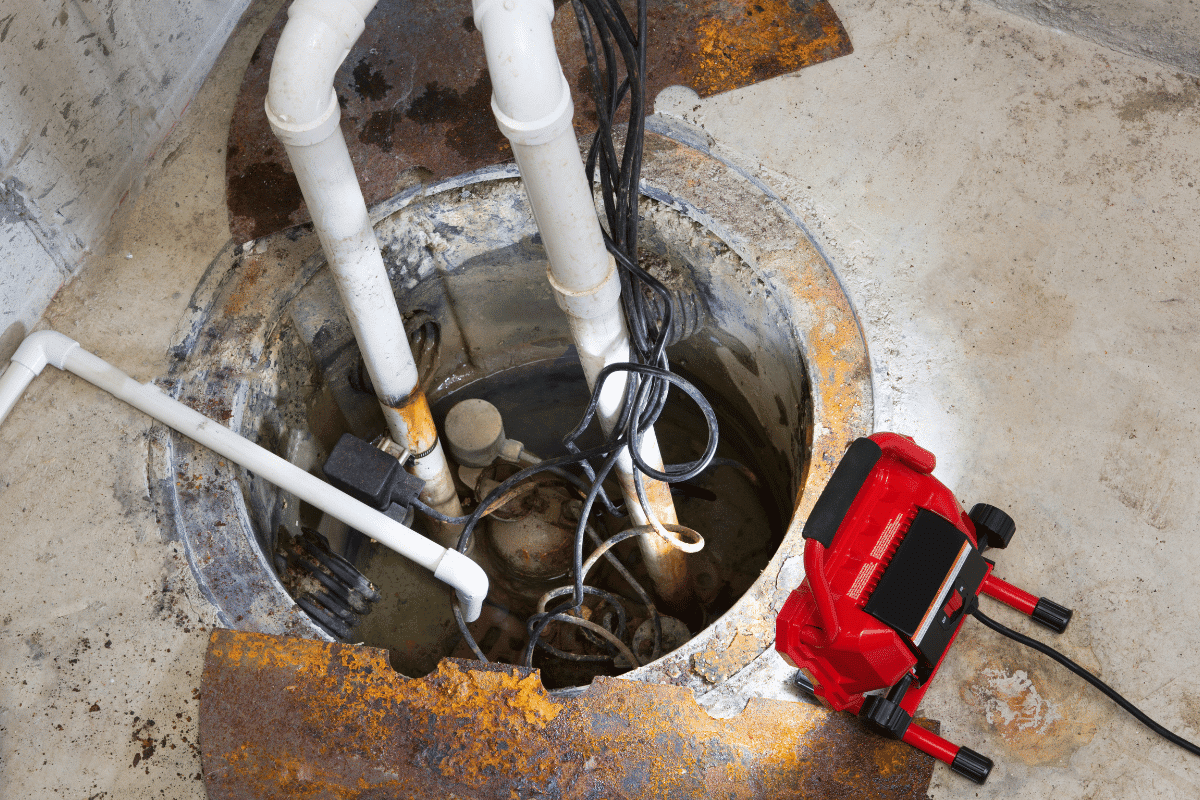September 20, 2024
Ejector Pump vs. Sump Pump: Understanding the Differences and Choosing the Right Solution
When it comes to keeping your basement dry and your plumbing system functioning smoothly, understanding the differences between an ejector pump and a sump pump is essential. While both play crucial roles in managing water, they serve distinct purposes and are used in different situations. At Sermon Service & Electric, we’re here to help you navigate the ins and outs of these pumps so you can make the best choice for your home. Let’s dive into the key differences between an ejector pump and a sump pump, and how each can benefit your property.
What is a Sump Pump?
A sump pump is designed to keep your basement or crawl space dry by preventing groundwater from accumulating. It’s typically installed in a sump pit, which collects water that enters your basement from external sources, like rain or snowmelt. When the water level in the pit reaches a certain point, the sump pump activates and pumps the water away from your home, directing it to a storm drain or a designated drainage area.
Key Features of Sump Pumps:
- Water Management: Sump pumps primarily handle groundwater, preventing basement flooding and water damage.
- Automatic Activation: Most sump pumps come with a float switch that automatically turns the pump on when water levels rise.
- Maintenance: Regular maintenance, such as cleaning the pit and checking the pump’s functionality, is crucial to ensure reliability.
What is an Ejector Pump?
An ejector pump, on the other hand, is used to pump wastewater and sewage from lower-level plumbing fixtures, such as bathrooms, laundry rooms, or kitchens in basements. This type of pump is necessary when these fixtures are below the main sewer or septic line and need assistance to push waste uphill. The ejector pump is installed in a sealed pit and is equipped with a powerful motor to handle solids, directing them to the main sewer line or septic system.
Key Features of Ejector Pumps:
- Waste Management: Ejector pumps are designed to handle both liquid and solid waste, making them ideal for basement bathrooms and other plumbing fixtures.
- Sealed System: These pumps operate within a sealed pit to contain odors and ensure sanitary conditions.
- High Capacity: Ejector pumps are built to move waste efficiently, using a high-powered motor to transport waste to the appropriate line.
Ejector Pump vs. Sump Pump: Key Differences
While both pumps are vital for managing water and waste, they have distinct functions and are not interchangeable. Here’s a quick breakdown of the main differences:
- Purpose: Sump pumps deal with groundwater to prevent flooding, whereas ejector pumps handle wastewater and sewage from plumbing fixtures.
- Installation Location: Sump pumps are typically found in homes with basements prone to water infiltration, while ejector pumps are necessary for homes with basement plumbing that’s below the sewer line.
- Material Handling: Sump pumps are designed to move clear water, while ejector pumps can handle solid waste, making them more robust and suited for sewage.
Choosing the Right Pump for Your Home
Choosing between an ejector pump and a sump pump depends on your home’s specific needs. If you’re dealing with groundwater issues, a sump pump is the solution to keep your basement dry. However, if you have a basement bathroom or laundry room, an ejector pump is essential for managing waste and keeping everything flowing properly.
At Sermon Service & Electric, we specialize in both ejector pump and sump pump installations and repairs. Our experienced technicians can assess your home’s needs, provide recommendations, and ensure that your pump is installed correctly and functioning at its best.
Maintenance Tips for Ejector and Sump Pumps
To keep your ejector pump or sump pump in good working condition, regular maintenance is key. Here are some tips to ensure your pumps continue to operate efficiently:
- Regular Inspections: Check your pumps periodically to ensure they’re working properly. Look for signs of wear, debris buildup, or any unusual noises.
- Test Your Pumps: For sump pumps, test the float switch to ensure it activates the pump when water levels rise. For ejector pumps, test the system periodically to confirm it’s pumping waste effectively.
- Clean the Pits: Keeping the pits clean and free of debris can prevent clogs and improve pump performance.
- Schedule Professional Maintenance: Annual maintenance by a professional can help identify and address potential issues before they become major problems.
Trust Sermon Service & Electric for Your Pump Needs
Whether you need an ejector pump or a sump pump, Sermon Service & Electric is here to help. Our team of experts can guide you through the process, from selecting the right pump to ensuring proper installation and maintenance. Don’t leave your home’s water and waste management to chance—trust the local experts to get the job done right.

